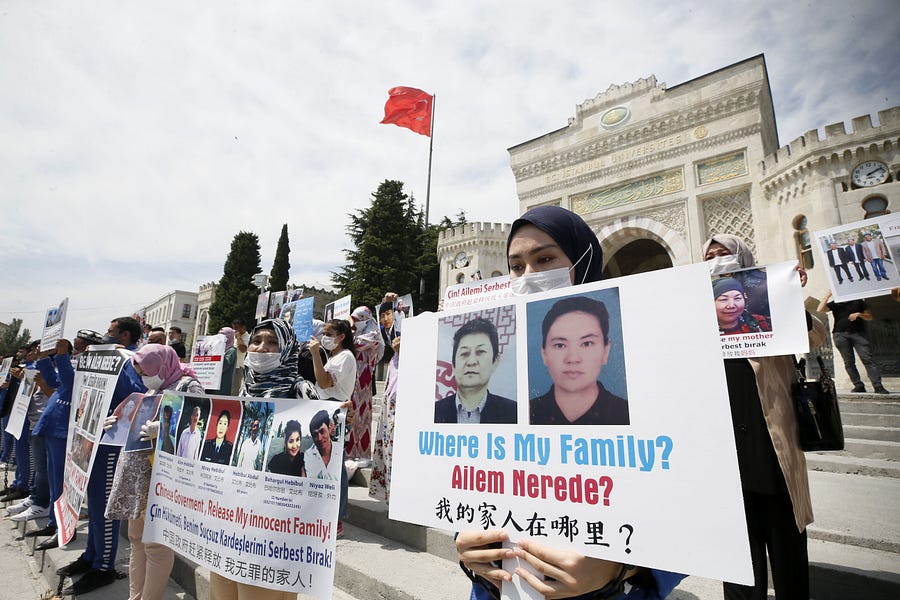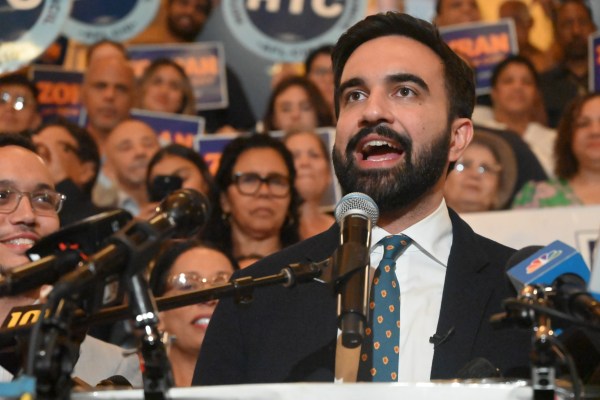In the months since the emergence of COVID-19, the Chinese Communist Party’s authoritarian regime has become only more repressive. The CCP has sought to expand its control over Hong Kong by cracking down on the semi-autonomous city’s civil liberties, moved to consolidate control over disputed areas on its border with India, and stirred up trouble in the South China Sea—while the rest of the world remains distracted by its continued battle with the virus.
The most troubling aspect of the CCP’s disturbing recent behavior, however, is undoubtedly its treatment of its Uighur population, a Muslim ethnic minority that lives mostly in the northwestern province of Xinjiang. The Uighurs have suffered from state persecution at the hands of the CCP for decades, but according to many reports, between 800,000 and 2 million Uighurs and other Muslim minorities have been forced into “re-education camps” by the Chinese government since April 2017. Videos posted to the Chinese version of TikTok reportedly show Uighurs being shipped off to labor camps even during the pandemic in February.
“It’s the largest-scale detainment of a religious minority that we’ve seen since World War II,” says Amy Lehr, director of the Human Rights Initiative at the Center for Strategic and International Studies.
Beijing’s justification for the camps—which the government initially denied existed, and now claim are “educational training centers” that are “like boarding schools, where the students eat and live for free”—is nominally concern over religious extremism and terrorist threats stemming from Islamic fundamentalism in the Uighur population. The Chinese Communist Party, which is officially atheist, has long seen religious expression as a threat to its power. (The Uighurs are hardly the first example of this—Buddhists in Tibet and practitioners of Falun Gong in mainland China have both borne the brunt of horrific state persecution.)
Leaked documents from secret speeches given by Xi Jinping in Xinjiang in 2014 warned of “the toxicity of religious extremism” and called for “absolutely no mercy” in using the “organs of dictatorship” to combat the threat of Islamic terrorism.
But while “there have been a few isolated incidences of terror” in the region, Lehr says—most notably, a knife attack perpetrated by Uighur extremists killed 31 and injured 141 in 2014, and thousands of Uighurs travelled to Syria to fight alongside al-Qaeda in the country’s 2011 civil war—“the Uighurs are generally a pretty moderate population.” Experts now believe that the Uighurs are clearly being targeted on the basis of their identity rather than behavior.
What little information gets out about the internal conditions of the camps is horrific: Conditions have been likened to the Soviet forced-labor gulags, with detainees being forced to renounce Islam and praise communism, and women being sexually assaulted and subjected to forced abortions. Some detainees have committed suicide.
The CCP has downplayed these conditions and offered sometimes bizarre and offensive rationalizations.
“The CCP often uses medical language to describe its policies,” says Sheena Greitens, a senior fellow at the Brookings Institution’s Center for East Asia Policy Studies. “Chinese officials routinely liken perceived threats in Xinjiang to cancer and infectious disease. The implication of this medical analogy to a domestic audience inside China is that the state, in locking up citizens en masse, is acting on the caring, curative intent of a doctor rather than the repressive impulses of an authoritarian regime. But the analogy also reveals something far more problematic—the logic of ‘immunization’ dictates that security depends on targeting and ‘treating’ citizens long before they have shown any symptoms of threatening behavior. So by definition, large numbers of innocent people are being targeted for ‘treatment.’”
The Chinese first built camps in Xinjiang—now estimated to number in the hundred—in the months following the 2014 knife attack and Xi’s visit to the region, but mass reeducation efforts began in earnest in 2017, after the Xinjiang government’s passage of an “anti-extremism” law that forbade the wearing of long beards or face veils and flooded the province with tens of thousands of new Chinese security officers, building what many have described as an Orwellian surveillance state.
As a result, even those who are not interned in the camps are subjected to “an intensive, high-tech regime of surveillance and government monitoring, which also extends beyond China’s borders,” says Greitens. “Uighur diaspora networks and groups making pilgrimages to Mecca, to take just two examples, are subject to monitoring and in many cases, state coercion while they are abroad. During this same period, China has shifted its broader policies toward minority inhabitants of Xinjiang in a much more assimilationist direction, weakening the promises of cultural autonomy that the CCP has made since the 1940s.”
While the U.S. has passed significant legislation responding to China’s abuses in Hong Kong, there has been less coordinated action on the CCP’s crackdown in Xinjiang, and the administration’s handling of the issue has been mixed. According to John Bolton’s memoir, President Trump told Chinese President Xi Jinping in 2019, “that Xi should go ahead with building the camps, which Trump thought was exactly the right thing to do.” Those comments echoed a previous endorsement of the camps from Trump in 2017, Bolton reports he was told by Matt Pottinger, a top National Security Council official. Trump later explained, in an interview with Jonathan Swan of Axios, that he had held off imposing any sanctions on the Chinese over their treatment of the Uighurs because he didn’t want to jeopardize trade talks. Last month, though, the United States did place sanctions on various Chinese officials, including a member of the Politburo, for human rights abuses in Xinjiang.
As anger has built toward China for mishandling the pandemic, and as the world has become aware of China’s other aggressions during this period, it’s possible that more attention will be focused on the plight of the Uighurs.
“My sense is that the CCP is willing to incur large costs for policies that it believes will contribute to its political survival, even in the face of external backlash—whether that’s in Xinjiang, Hong Kong, or somewhere else in the future,” says Greitens. But in the future, she says, “there’s a real risk it will backfire on the CCP.”
Nate Hochman (@njhochman) is an ISI summer fellow at The Dispatch.
Photograph by Erhan Elaldi/Anadolu Agency/Getty Images.






Please note that we at The Dispatch hold ourselves, our work, and our commenters to a higher standard than other places on the internet. We welcome comments that foster genuine debate or discussion—including comments critical of us or our work—but responses that include ad hominem attacks on fellow Dispatch members or are intended to stoke fear and anger may be moderated.
With your membership, you only have the ability to comment on The Morning Dispatch articles. Consider upgrading to join the conversation everywhere.